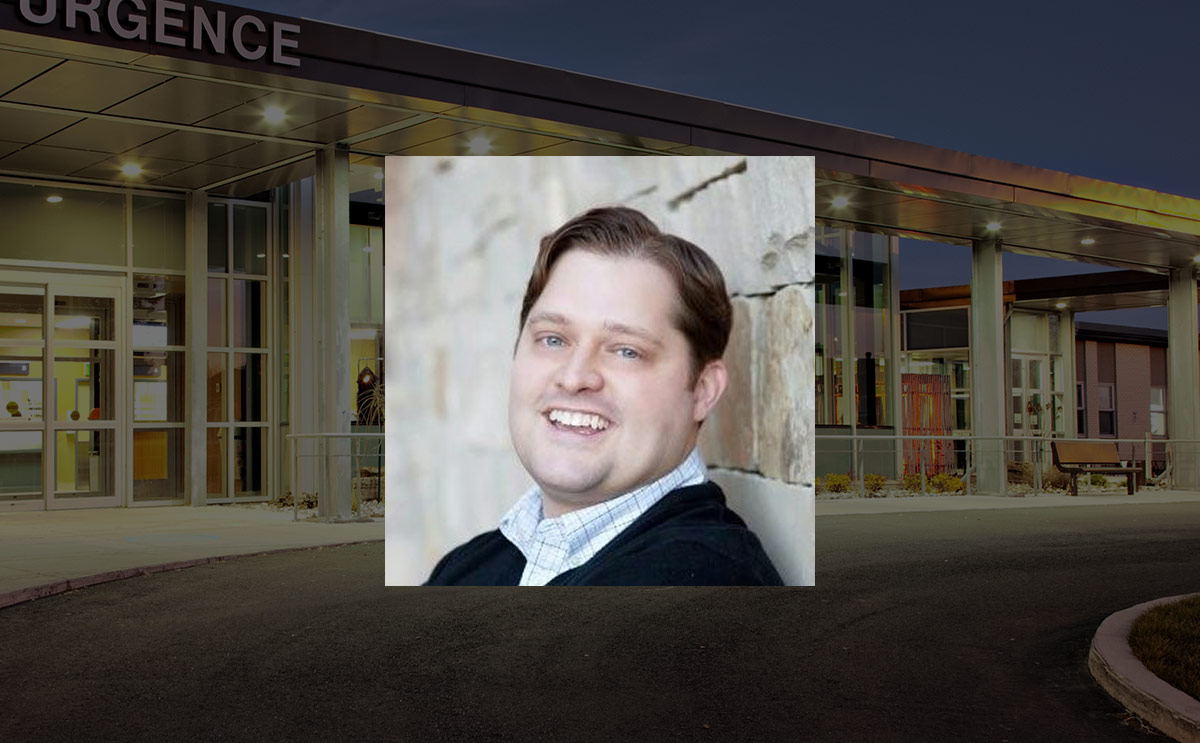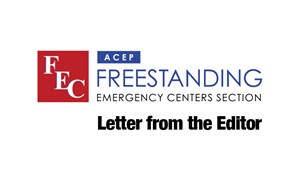
Chair’s Message
Before diving into this message, I want to make sure you are aware of both our upcoming FEC Section Meeting and Elections:
- Virtual FEC Section Meeting - The Dallas-based ACEP20 has been canceled. Instead, we will be having a virtual ACEP Scientific Assembly. Our FEC Section meeting will be held on October 20th from 3-5 PM Central Time via Zoom meetings. Connection details will be coming closer to that date.
- FEC Section Leadership Nominations - Please contact David McKenzie, Staff Liaison, dmckenzie@acep.org, by Friday, September 4th, to nominate a colleague or note your interest in running for Chair-Elect, Secretary/Newsletter Editor, Member at Large, and Alternate Councilor.
Over the last few years, Freestanding Emergency Departments have had many challenges. State and national legislation have made practicing Emergency Medicine in an Independent FEC more difficult. At the same time, insurance companies have failed to include FECs in their network, inappropriately denied coverage for emergency care, and are seeking to limit reimbursement through surprise billing legislation.
Moving forward, we need to come together to address these issues, some of which are unique to FECs, and others which are common for all of Emergency Medicine.
A recent article about FECs in Emergency Medicine News begins by rehashing Dr. Schuur’s criticisms related to Independent FECs seeking financial viability through location and doesn’t recognize recent steps made to address standardization of care provided by FECs. However, the article then goes on to praise care provided in FEC, and notes opportunities to address unmet needs.
Dr. Jesse Pines, Chief Innovation Officer for US Acute Care Solutions, notes the importance of recognizing that Freestanding EDs deliver “speedy, comprehensive service by highly trained professionals in a pleasant environment.” Rather than criticizing Freestanding EDs as a disconnected service and added cost in healthcare, he notes that “We need to shift the discourse toward connectivity and value-based care, and figure out how patient-centered models like freestanding EDs can be integrated into the longitudinal care system, fill unmet public health needs, or both.”
With Dr. Pine’s praise and challenge in mind, I’d like to recognize some positive events that have occurred over the last two years:
- CMS recognition - In April, the Centers for Medicare & Medicaid Services announced that Independent FECs in Texas, Colorado, Delaware, Rhode Island would be able to address surges in care related to COVID-19. Although this does not represent a permanent change, it is a step in the right direction. This is also an improvement in policy since Hurricane Harvey, where FECs took care of everyone when traditional EDs were not available, but were denied any reimbursement for that care.
- FEC Credentialing - Thanks to twenty-one physicians, representing ten different states, thirteen academic centers, and nine private companies, we were able to create a credentialing process that ACEP now uses to give accreditation to Freestanding EDs. In doing this, we focused on the importance of board-certification and standards for imaging, lab work, and EMS integration. Although our focus was making sure that care in FECs represented the best of emergency medicine and ACEP, our document is also now being used to define Emergency Care by other groups within ACEP.
- Research: The Freestanding model has been validated for both the Independent and Academic Freestanding EDs, showing fast treatment times, high patient satisfaction, and noting that care is almost always provided by a board-certified physician. Simon has documented the role of FECs in caring for pediatric and trauma patients, shown 90 minute door-to-balloon time for STEMIs, and shown how FECs can enhance resident education.
We can build on these positives as we work together on future goals:
- Let’s Build a Bigger Tent: the challenges we face in FECs are also faced by our colleagues in working in HOPDs. Together, we need to share best practices and strategies for common challenges like EMS protocols, providing quality emergency care with fewer resources, surge protocols, and providing a crucial piece for longitudinal care and public health needs. In addition to working with our HOPD colleagues, let’s work with the Rural Section, Practice Management and Health Policy Section, Telehealth Section, and EMS-Prehospital Care on our common goals.
- Improve Access to Emergency Care: Between 1990 to 2009, there number of EDs in non-rural areas decreased by 27%. FECs and HOPDs offer a way to improve access to Emergency Care. Nineteen Critical Access Hospitals (CAH) were closed in 2019. Converting CAHs to FECs provides a way to keep local access to emergency care and we should evaluate how this could be done.
It has been an honor to serve as Chair and work with so many excellent physicians and talented individuals over the last few years. I’ve seen our Section in times of growth and times of apprehension. I’ve also seen our Section members serve their colleagues and lobby for our patients at state capitals, in Washington DC, via phone conferences, in the press, in academic journals, and on Twitter. We’ve faced challenges in the past and we face challenges now. We will continue to prevail as we continue to fight for our patient’s access to Emergency Care and find innovative ways to add value to that care.
John R. Dayton, MD, FACEP, FAAEM



